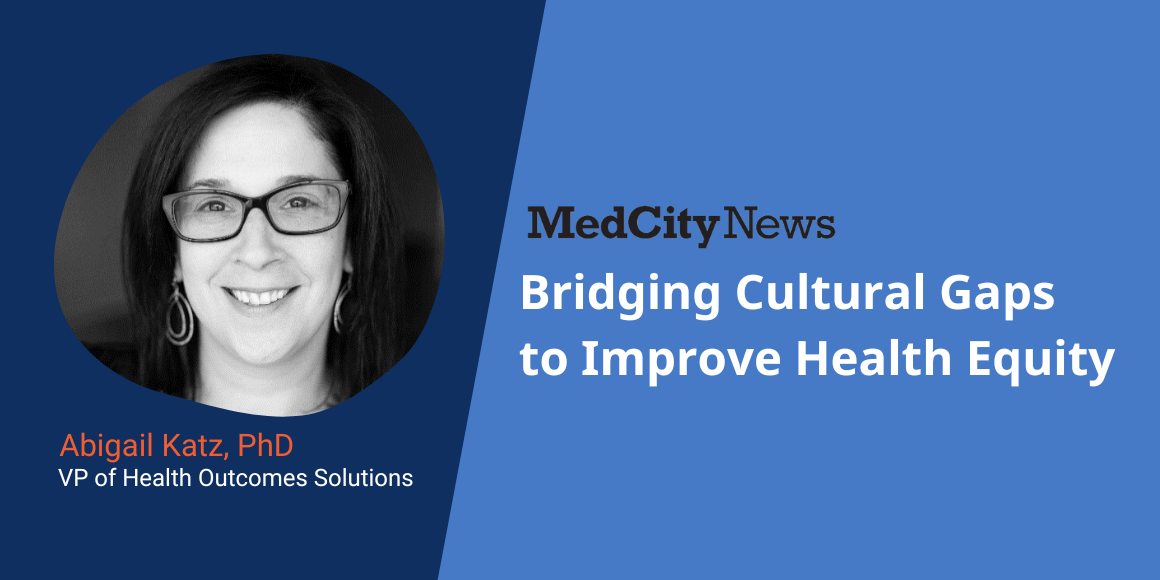Original publication: MedCity News
Although many healthcare systems across the country have developed promising pilot programs, there remains an urgent need to develop systematic approaches to addressing health disparities within diverse populations.
Achieving health equity benefits healthcare payers and members alike. Culturally diverse audiences experience disparities in access to healthcare and in health outcomes. Patients with limited English proficiency (LEP) experience poor health outcomes across the board, including above-average emergency department visits and hospital stays.
Most healthcare leaders agree that we must work to improve these outcomes, but we are not where we need to be yet. Although many healthcare systems across the country have developed promising pilot programs, there remains an urgent need to develop systematic approaches to addressing health disparities within diverse populations. In LEP communities, these disparities stem in part from an underlying gap in health literacy, including understanding health insurance or access to care and treatment options.
Community engagement approaches can help bridge this gap. Research has demonstrated both the efficacy and cost-effectiveness of community-based programs. According to a 2020 study conducted by University of Pennsylvania researchers, a community health worker initiative delivered a return on investment of $2.47 for every $1.00 invested in the program by Medicaid, chiefly by reducing hospitalizations among program recipients.
For long-term success, it is important to consider how these programs are implemented. Effective community engagement programs cannot be dictated to a community; they must be done with the community. That means working in partnership with community members and tailoring your content, both linguistically and culturally, to the community your team is serving, reaching them where they are and how they prefer to be reached.
Culturally tailored community engagement programs for enrollment and beyond
A key step in achieving health equity is getting people enrolled in a health insurance plan. In addition to providing support for urgent health concerns, health insurance ensures access to preventive care, allowing members to address issues before they become serious. In many cases, health insurers may offer support for social needs such as transportation assistance or vouchers for healthy foods. Support for these social determinants of health is often needed by diverse populations.
Choosing a health insurance plan and managing the enrollment process can be complex for many Americans, no matter which language they speak. For people with limited English proficiency, the lack of familiarity with health insurance is another common obstacle. Last year, our bilingual healthcare navigators reported that 80 percent of the uninsured people they enrolled had never had health insurance before. Meeting these people where they are and educating them improves enrollment.
Health is a personal topic, and healthcare is complicated. LEP patients need sound advice from someone they trust. Organizations that seek to serve LEP populations must invest in building that trust first. That is why our team includes enrollment specialists and community health workers who not only speak the language but also maintain a presence in the community and operate from a place of cultural familiarity, creating a connection that resonates.
The importance of working within existing community structures
Building credibility takes time, but it is easier to do if you work within existing community structures. Learning which organizations serve a given community and partnering with them is critical. Partnerships may come in the form of referrals or by cohosting events within the community, like partnering with a food bank to help community members access healthcare services and alleviate food insecurity.
Another way to build trust is to understand and utilize the media outlets that are most favored by the communities you seek to serve. For example, organizations focused on community outreach can maintain strong connections with local media, including Spanish-language TV and radio stations. This community-based approach provides valuable information through trusted messengers in the community.
Don’t just show up, follow up
Outreach for enrollment is only the first step. Successful community engagement campaigns offer people opportunities to follow up, both to finish enrolling in a plan and to learn how best to use their benefits.
Hosting in-person events throughout the year where community members can come and ask questions about their coverage or bring in insurance paperwork they do not understand is one effective strategy. In South Florida, similar community events often take the form of Cafecitos, which are smaller gatherings that offer a chance to connect with other Spanish-speakers in an informal setting to educate community members about health issues. Community outreach events focused on specific wellness initiatives can also be effective.
Members may require the chance to follow up on the information they receive at these events later, taking the information they have received at the event and thinking about it further or discussing it with family or friends. Offering private, prescheduled virtual appointments after the event gives them the chance to ask follow-up questions and then act in their own time with more comfort—and more information from trusted resources.
Using AI to fill in knowledge gaps
These community engagement strategies have one characteristic in common: Planning is paramount. Culturally tailored interventions can be effective, but you must know who the community is to effectively tailor these solutions. For payers, significant data gaps exist in understanding the languages spoken within a given coverage area or community.
Artificial intelligence (AI) can help fill these gaps. By cross-referencing key identifiers against a global database, AI can compile information about ethnicity and language preference and identify 180 ethnic groups and 80 languages with over 85 percent accuracy. With this data, healthcare organizations can ensure all populations get the information they need to keep themselves healthy, addressing a key cause of healthcare inequality.
Community engagement approaches provide effective, practical solutions for realizing your organization’s health equity goals. Connection and community go hand in hand, and a healthy community is a strong community.
To speak to our healthcare experts, contact us here.

